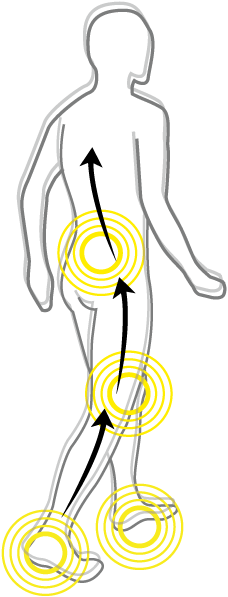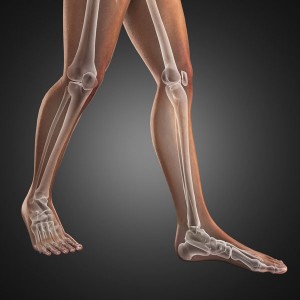
What is Foot Pronation
 Pronation is a normal and complex movement within the sub-talar joint of your foot, which is situated under your ankle joint. The movement pronation is really a collective term for 3 separate movements which combine to produce an overall movement, one that looks like your feet are rolling inwards. Pronation occurs at a point when you are walking called the stance phase i.e. when your foot is bearing your weight on the ground, (the other foot will be in what is known as swing phase i.e. not bearing weight but swinging past the weight bearing foot and preparing to bear weight for your next step).
Pronation is a normal and complex movement within the sub-talar joint of your foot, which is situated under your ankle joint. The movement pronation is really a collective term for 3 separate movements which combine to produce an overall movement, one that looks like your feet are rolling inwards. Pronation occurs at a point when you are walking called the stance phase i.e. when your foot is bearing your weight on the ground, (the other foot will be in what is known as swing phase i.e. not bearing weight but swinging past the weight bearing foot and preparing to bear weight for your next step).
In fact, pronation occurs right up to the point where your foot is fully on the ground and then this movement should stop as it is no longer necessary. Pronation therefore allows the feet to come into contact with the ground during walking and running in a gentle and controlled manner and to absorb the forces involved when striking the ground, called ground reaction forces.
Pronation also allows the whole lower limb to roll inwards (watch yourself as you walk towards a mirror and you will see your knee cap roll inwards). This allows your knee and hip joint to flex and thigh muscles to work, further absorbing ground reaction forces. Once pronation has finished in the sub-talar joint, it is followed by a movement called supination which prepares, in part, the foot and lower limb for push off.
 However, if the movement of pronation continues (for some reason) to occur within the sub-talar joint when it should have ceased i.e. when the foot is fully bearing weight, this is known as excessive pronation. Excessive pronation can lead to imbalance and overload within the joints and soft tissues of the foot, ankle, knee and potentially the lower back causing pain.
However, if the movement of pronation continues (for some reason) to occur within the sub-talar joint when it should have ceased i.e. when the foot is fully bearing weight, this is known as excessive pronation. Excessive pronation can lead to imbalance and overload within the joints and soft tissues of the foot, ankle, knee and potentially the lower back causing pain.
If you stand up and relax, then carefully and without producing any pain, with your feet flat on the floor, gently roll your knees inwards you may feel what excessive pronation can do to your posture. You might feel your feet rolling inwards and your body leaning forwards with some pressure in your lower back. If this excessive pronation continues at every step then it may be contributing to pain in your foot arch, heel, ankle/knee/hip or lower back joints and soft tissue i.e. muscles, tendons, ligaments and fascia.

